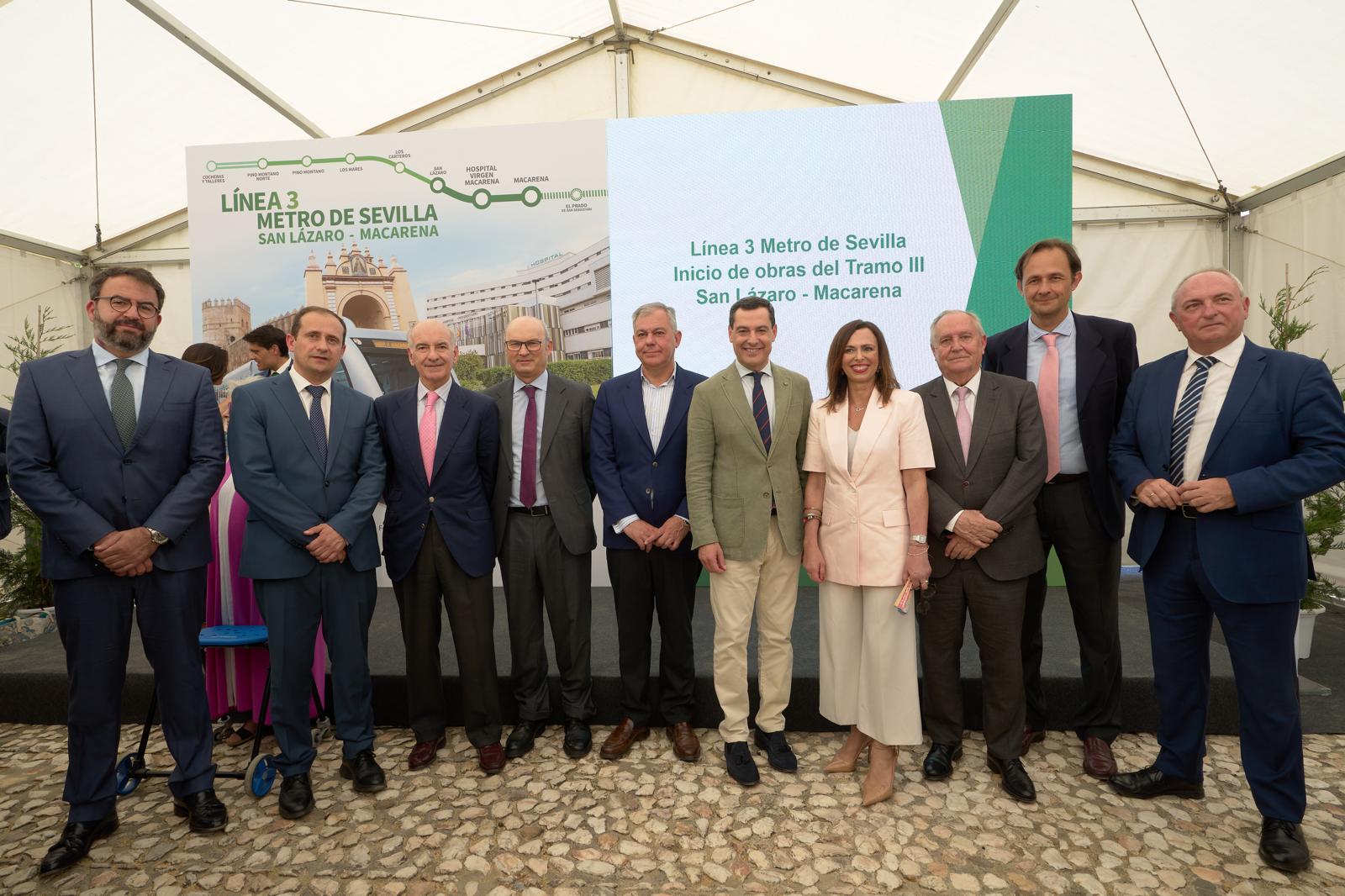In a joint venture with DSV Constructora y Ferroviaria and Vías y Construcciones, Lantania is delivering a contract valued at €173 million
Madrid, 20 June 2025. Lantania, in partnership with its subsidiary DSV Constructora y Ferroviaria and Vías y Construcciones, has launched construction on the third section of the northern part of Seville Metro Line 3. The infrastructure, water and energy group is working on a contract awarded by the Andalusian Regional Government to build a 1,013-metre underground section from San Lázaro to the junction with Ronda Histórica, passing beneath the Virgen Macarena Hospital. The project, with a budget of €173 million and a 46-month timeline, is a critical step in enhancing Seville’s public transport network.
The groundbreaking ceremony held today marks the launch of a vital infrastructure project for Seville, strengthening the city’s public transport system and fostering a more connected and accessible urban environment. The event was attended by María Jesús Montero, First Deputy Prime Minister of Spain; Juanma Moreno, President of the Andalusian Regional Government; Rocío Díaz, Regional Minister for Development, Territorial Planning and Housing; and José Luis Sanz, Mayor of Seville. They were joined by José Alberto Carrasco, Managing Director of Infrastructure at Lantania; Pedro Almagro, Managing Director of Lantania Water; and José Nofuentes, Director of Infrastructure Business Development at Lantania.
Work has begun with preparatory activities, including the installation of site equipment, geotechnical surveys, analysis of affected utilities, and coordination with Seville City Council for tree transplantation. Technical designs for the tunnels and station are also underway.
Technical features of the project
The third section of Seville Metro Line 3 extends from Avenida Doctor Fedriani, near the intersection with Avenida de San Lázaro, to the junction of Calle San Juan de Ribera and Calle Muñoz León at Ronda Histórica. Construction will primarily use the cut-and-cover method, involving open excavation to build the tunnel, followed by surface restoration. A double-track tunnel will be constructed between retaining walls, except in the vicinity of the Virgen Macarena Hospital, where a 170-metre section will be excavated using a mined tunnel technique to avoid disrupting the hospital’s underground car park.
A key feature of the project is the construction of an intermodal underground station at the Virgen Macarena Hospital, located 20 metres below ground and designed to serve as an interchange with the future Line 4. This station will also be built using the cut-and-cover method.
Additional works include the installation of slab track, civil works for station facilities, drainage systems, utility reinstatement, urban redevelopment, and landscape enhancements.
Lantania and DSV Constructora y Ferroviaria’s Seville Metro project
This marks the second project undertaken by Lantania and its subsidiary DSV Constructora y Ferroviaria for the Seville Metro. The two companies are also delivering the technical branch of the northern section of Line 3, connecting Pino Montano to Prado de San Sebastián. That project includes constructing the branch platform, two structures (one for the railway and another spanning the Tamarguillo stream) along with track installation in both directions, drainage systems, safety infrastructure, and civil works for track electrification.
The contract also encompasses comprehensive redevelopment of the surrounding area, including planting native species in tree basins along the revitalised zones.
